Rock stars and saving lives: Inside the world of Qld’s flying farmers
Some have used them to fly in movie stars and royals, others to save lives. But for our Queensland farmers and cattle barons, the ‘Toyotas of the Sky’ are the only way to navigate huge properties which are close to nothing.
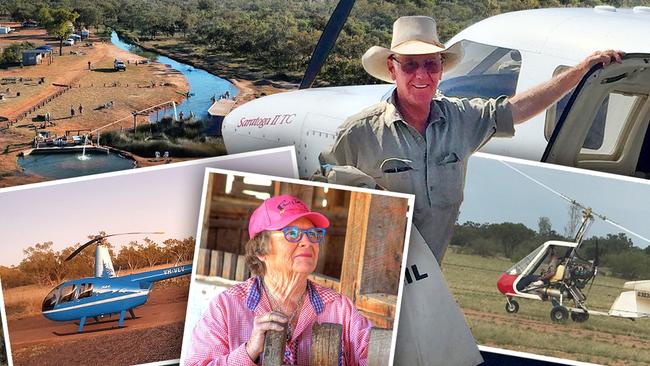
Mackay
Don't miss out on the headlines from Mackay. Followed categories will be added to My News.
They’ve flown royalty and rock stars into their properties, used aircraft to save lives and been accused of being ‘bloody millionaires’, but for Queensland’s remote flying farmers their helicopters and ‘the Toyotas of the Sky’ are more a necessity than a luxury for life.
For remote grazier Guy Keats, his aircraft has literally been the difference between life and death.
There was heavy rain and the Flying Doctor was not willing to fly in the conditions, nor did he trust Mr Keat’s description of the airstrip on his property, north of Julia Creek, when he called for help for his severely ill son.
So Mr Keats flew his son to Richmond, in his helicopter, and the Flying Doctor was then able to take him to Townsville.
“He was convulsing and he had a burst appendix,” he said.
“By the time we got him to hospital … he was starting to shut down.
“Without the helicopter he would have died.”
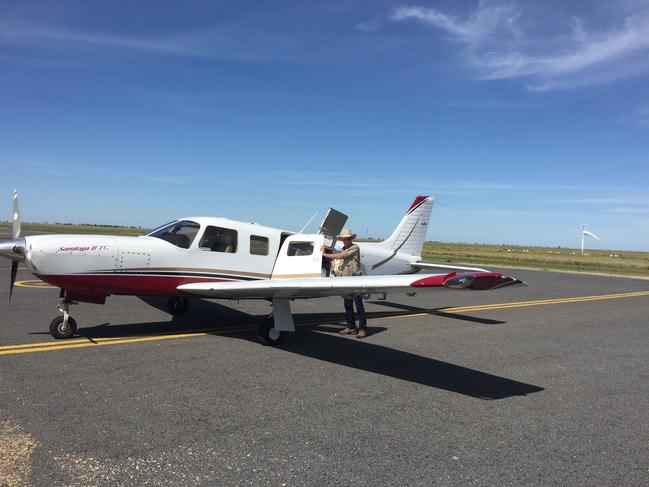
While for Gilberton Outback Retreat owners Rob and Lyn French, aircraft has opened a new world of opportunities for their 7th generation cattle station.
The French family use their dirt tarmac to fly in movie stars, royals, and other guests at their five-star luxury getaway.
For cattle baron Alistair McDonald, aircraft were a crucial “business tool first and foremost”.
The McDonald family has 14 property holdings that stretched from the Gulf to the NSW border.
“A lot of people think … ‘you bloody millionaire cattle people who fly around in planes like they’re rock stars or something’,” he said.
“It is a luxury being able to fly but it’s a main necessity in most of those areas in the west.”
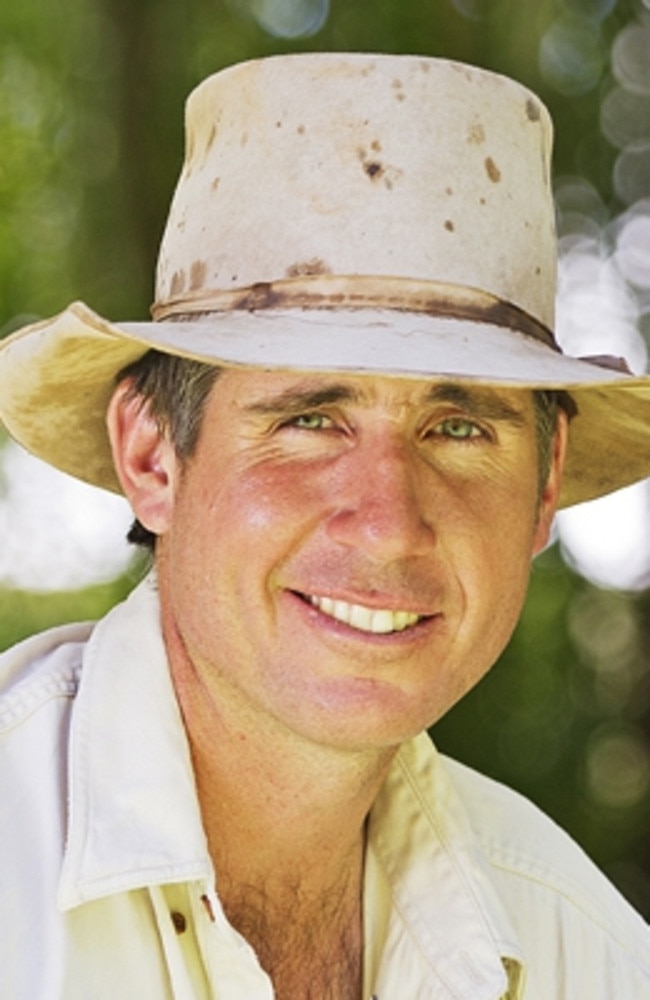
Areas where roads are so bad they are undriveable for large chunks of the year.
“Without planes you can’t get to where you need to be,” he said.
Two of his holdings – Rutland Plains and Dunbar – are located at Kowanyama, along the eastern side of the Gulf of Carpentaria.
Mr McDonald said in 2021 and 2022 the only road accessing those properties was open for a combined total of seven months.
“Out of 24 months,” he said.
“They’re the worst maintained roads in Australia I would say.”
MP Robbie Katter, who has had a pilot’s licence for about four years, said flying was crucial to his role as member for Traeger – the difference between a 2.5-hour flight or eight to nine hours in a car.
“I’ve got a Mooney … Cessna’s are the Toyotas of the sky … the Mooney is like the Holden sports car version,” Mr Katter said.
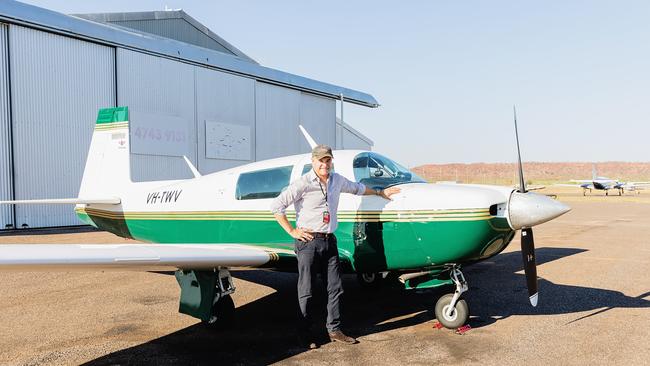
“I don’t mean that in a glamorous way, it’s just fast. It’s a big gamechanger.”
Aircraft are vital to access supplies during the wet season, collect the mail, and to maintain watch over stock stretching from the Cape down to the NSW border.
Take a look at the life of our flying farmers.
‘I CAN’T LIVE HERE WITHOUT AN AIRCRAFT’
Grazier Guy Keats has a 100,000 acre property about 100km north of Julia Creek, which is roughly seven hours west of Townsville.
“We’re in the centre of everything here but close to nowhere,” he said.
The father of four has been flying for more than 40 years and all his children have ridden in his aircraft from just a few days old.
“I’ve always had aircraft. Started off with ultra lights, fixed wing for mustering, and then moved into larger (craft) starting with a four-seater and then a five-seater,” Mr Keats said.
“Now I’ve got a six-seater fixed wing.”
Mr Keats, who has always lived on remote properties, said an aircraft was “essential”.
“If I get to a stage I have health problems and I can’t fly (we’ll) have to leave the (property),” he said.
“I can’t live here without an aircraft.”
“We’re over an hour from Julia Creek but there’s minimal health care, so I’ve got to be able to get to Townsville,” he said.
The family is 9.5 hours from Townsville via car “and an hour and 35 by air”.
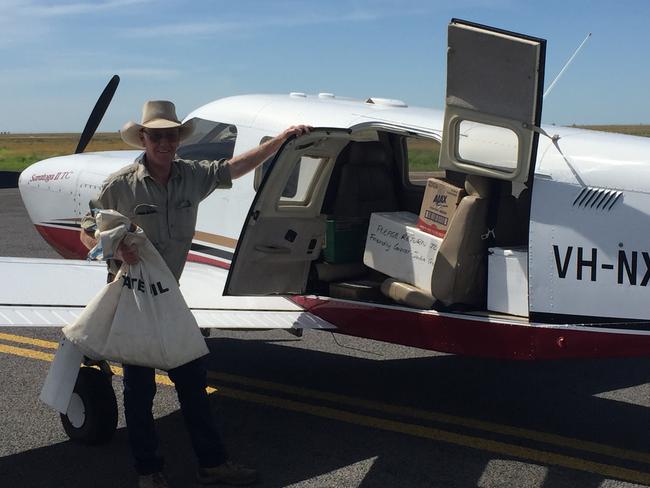
‘I JUST FLY IN AND GET OUR GROCERIES’
During the wet season the roads can be closed for six weeks to two months at a time, he said, and so he used his plane to do the mail service and deliver food for his household and the neighbours.
“I just fly in and get our groceries … I can give them (the neighbours) an aerial drop,” he said, adding otherwise he will use a gyrocopter to drop the food off.
“When the roads are open we get a mail service (which) brings out our groceries and spare parts.”
This year there had only been two mail runs since Christmas and Mr Keats said it would be at least another two weeks before they started up again.
Mr Keats also used the plane to drop the children at boarding school in Townsville and travel in relation to his business interests.
“On one tank of fuel, I can get to all the capital cities, except Perth,” Mr Keats said.
His wife Deborah said they would also use the plane to fly their children to an activity day back when they were all still homeschooled.
“It was nice to be able to do that … so the kids could have that interaction,” she said.
She recalled one day about 10 years ago having to drive the children “into town for an activity day”.
“We got bogged,” she said, adding all her children had been quite young.
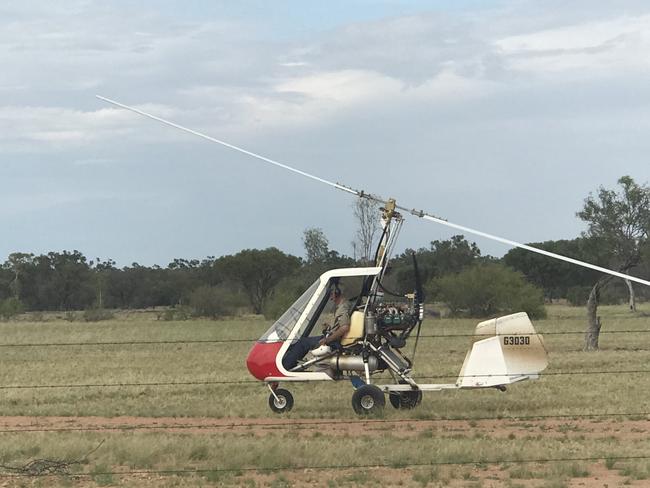
“I was out unpacking mud off the tyres.”
Mr Keats said he used both the plane and gyrocopter for mustering because they allowed him to “be all over the job”.
“I can see what everyone is doing, I can find the ones that get lost,” he said.
The craft also help with surveillance during the wet season.
“We have had cattle theft in the past … the aircraft has been useful.
“We’ve got poachers who come to get pigs, they leave gates open, cut fences, cause other trouble.
FLYING IN THE FAMILY
Alistair McDonald said in the wet season the region cops very high rainfall, “60 inch rainfall country”, he said.
“You get a lot of floods and the roads are cut (and) stay cut until July.
“The only way we could get back to Mareeba, to get stores, pick people up was in an aeroplane.
“As far as getting anywhere as soon as the wet season starts, if you don’t have a plane you’d perish there.”
The McDonald family always had a keen interest in and liked to use the benefits of aviation.
Mr McDonald said his father and uncle had flown since they were 16 – and while many of the properties now had easy access via bitumen roads, he said 60 years ago it was a different story.
“Flying was a big part of all their running of the places from very early on,” he said.
Their aircraft over the years included four-seater 182s to six-seater Cessnas, “which my father used to cart us kids around to Brisbane for holidays as well as pick up from school and get around to all the other properties” as well as picking up parts or hospital drop offs.
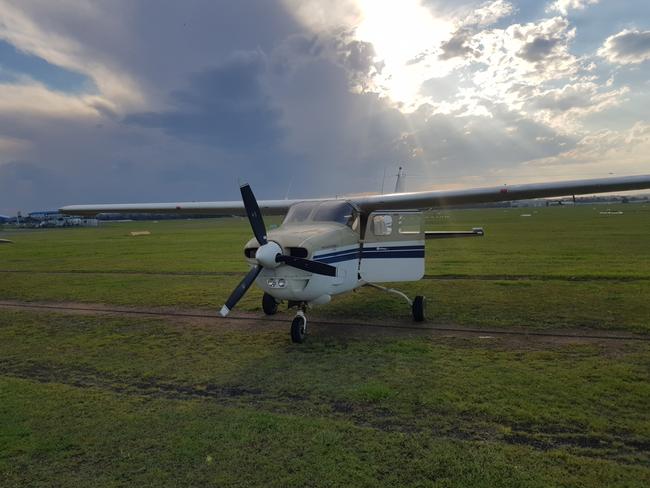
They also have a PC 12, which is an eight-to-10-seater turbine plane.
“That hilly country around Cloncurry (where four of his holdings were based) … there’s a lot of ranges so roads don’t go direct,” he said.
“Even just checking the waters on the property would be a two-day exercise in the car, and you could do it in an aeroplane or a helicopter in an hour-and-a-half.”
Mr McDonald learned to fly a plane when he was 21 and a chopper at 30.
He said each craft had their benefits – for shorter distances the helicopters were economical as well as versatile.
“You can land wherever you need,” he said.
“Whereas with a plane you’re not as versatile as far as being able to stop wherever you need to.”
But for longer trips stretching for about seven hours, he said a helicopter was not feasible.
‘THOUSANDS OF LIGHT PLANES AROUND’
Mr McDonald said aviation had changed a lot in the past 40 years.
“In the 70s, 80s, and 90s … there were thousands of light planes around,” he said.
“They were cheap to run, there was lots of them, they were relatively inexpensive … we used them pretty well exclusively.
Now many of those planes were reaching 40-plus years of age and were expensive to maintain.
“And the new ones that are coming out are so expensive they’re not really viable,” he said.
As such “a lot of people have just gone from using planes to using helicopters,” Mr McDonald said.
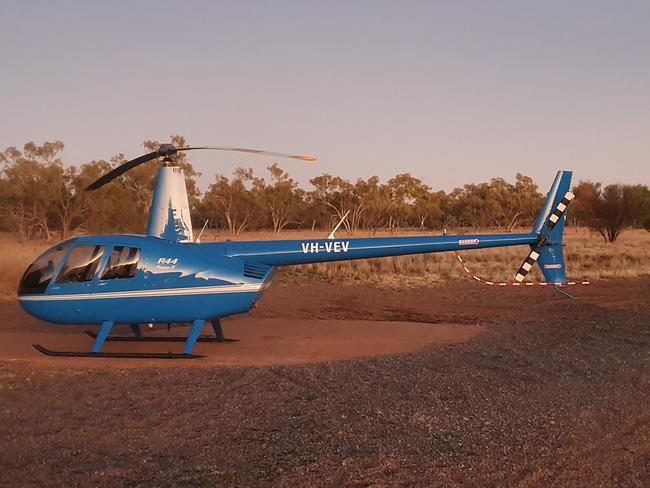
He used an R44 – a four-seater piston-powered helicopter.
“(They are) very common on properties because you can carry three people, they’re not much slower than a plane, they’re a lot more versatile and they’re a lot more readily available,” he said.
THE DECLINE OF LIGHT AVIATION
Traeger MP Robbie Katter said it was “well recognised” the light aviation industry as a whole was in decline.
“For around $100,000 you’ll buy a 30-year-old plane, and that’s what most people fly,” he said.
“The planes we’re all flying are getting older because to buy something new or near new you’re going to be looking at least half a million.”
Mr Katter said as there were “less and less aviation mechanics” to maintain the older planes, prices went up.
“Your plane might be stuck at the mechanics for three or four months, which is often not their fault … it’s often the parts, because you’re trying to chase up parts globally for a 30 to 40 year old machine,” he said.
“So they wait months to get something from the US.”
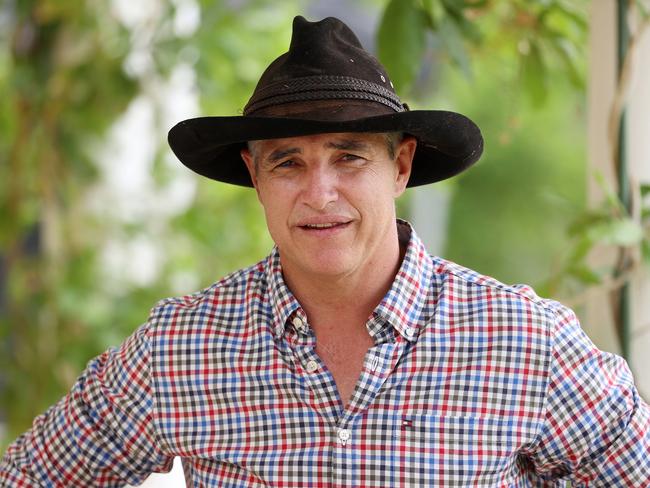
The KAP leader grew up in a country town and eventually became a property valuer specialising in rural valuations, which he said had always been his ambition.
“And obtain a private pilot’s licence to do that … politics got in the road,” he said.
The properties he had to explore were “very remote”.
“To me it was an essential part of operating,” he said.
“It would take you at least one day to get around some of these properties, and another day driving there and back from where I was based in Townsville and Mount Isa.
“Your costs could blow out if you didn’t manage your time.”
‘WE’VE HAD ROYALS, WE’VE HAD FILM STARS’
Gilberton Outback Retreat owners Rob and Lyn French, have a 7th generation cattle station and use their dirt tarmac to fly in guests to their five-star luxury getaway.
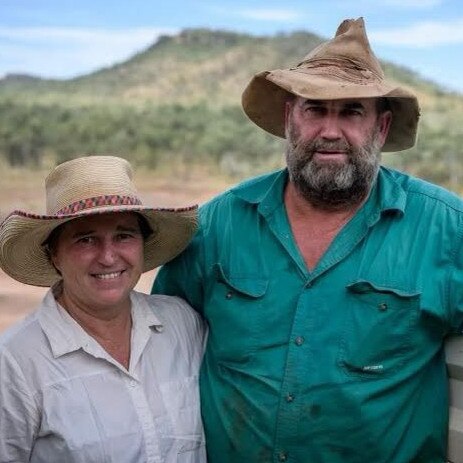
Located 450 km west of Townsville at the Gilbert River headwaters, Ms French says the exclusive stay always has a “personal touch”.
“It’s been in the family (since) 1869”, Ms French said.
“So it’s a lot of history.
“When guests come, we’re able to offer them our life and that experience.
“We take just one couple only at any given time (so it’s) very private and exclusive.
“We’ve had royals, we’ve had film stars (and) it’s just been really amazing.”
Ms French said their location had it all from the cattle to gold and Indigenous rock art.
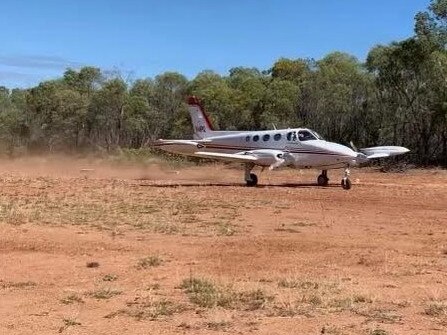
The French’s family history remembers the Jana (Yanga) people of Gilberton fondly with recorded interviews from family members who grew up with Indigenous grandparents, despite complicated histories of frontier violence.
She said about half of their retreat visitors flew into the community airstrip at Gilberton just five kilometres from the house, but helicopters can also park just outside on a purpose-built helipad.
FROM SHEEP TO ARTESIAN BATHS
Like the Frenchs, the Russells are using the power of flight to take business in a bold new direction.
Robyn Russell’s family has owned Charlotte Plains sheep station near Cunnamulla for a century, but now the 76-year-old is trying a more leisurely approach.

Originally running thousands of merino, the property’s 130-year-old bore is now the source for 14 artesian baths with the Russell’s airstrip now being used for more than visiting flying doctors.
“The baths are the big attraction”, Ms Russell said.
“Hot artesian baths (in tubs set) out under open sky.
“We get about 15 flights (in) a year with about a dozen people every time as well as campervans and grey nomads who stay in the campground.”
Ms Russell said the station opened to tourism in 2005, after being “really knocked about” by “a huge amount of drought years”.
But whether guests chose to fly or drive to their destination, they were offered the “full day experience” of a historical tour of the station.
Ms Russell said this included a stop at the 130-year-old woodshed now full of memorabilia “from yesteryear”, lunch, and then finishing up in the outdoor baths.

She said a “huge amount of people” had visited since Covid began with this year marking a special date in the calendar as a festival will celebrate a centenary at Charlotte Plains.
The Stars of Charlotte Plains will run from June 23-26, feature live music, a fun run, vendors, and “a couple of sheep on the spit”.
It will top off a run of successes as various tourism bodies recognised the station’s new ventures.
Charlotte Plains won TripAdvisor Travellers‘’ Choice Award in 2022 and three Grey Nomad Awards including Gold for Best Farm or Station Stay in 2021.
“We’ve had a slow sort of progression (and) grown over the years”, Ms Russell said.
“(Now,) it’s proving to be extremely successful.”




